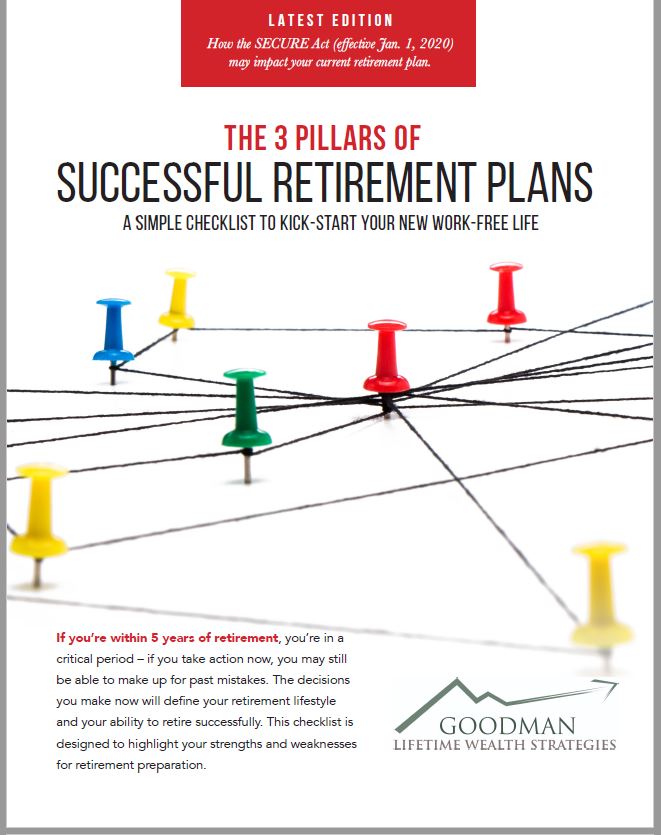In this month’s recap: Stocks hit some turbulence, turning cautious amid slowing economic growth, and policy debate in Washington.
U.S. Markets
The stock market hit a pocket of turbulence in September, with investors turning cautious amid Delta variant infections, slowing economic growth and ongoing policy debate in Washington.
The Dow Jones Industrial Average fell 4.29 percent while the Standard & Poor’s 500 Index lost 4.76 percent. The Nasdaq Composite dropped 5.31 percent.1
Sour Sentiment / China’s Influence
Investor sentiment deteriorated throughout the month. Weighing on stocks was uncertainty about the Federal Reserve Bank’s tapering plans, the fiscal and tax policy proposals being debated in Washington, and the economic growth implications of continuing supply bottlenecks.
This unease culminated in the market’s reaction to news that a large, heavily indebted property development company in China was in danger of not making its scheduled interest payments—a prospect that could lead to the company’s bankruptcy. The angst dissipated quickly as investors realized that the company’s difficulties appeared limited.
Fed’s Update / Higher Yields
With that, the market turned its focus to the Federal Reserve’s Federal Open Market Committee meeting to learn what the Fed’s plan would be with tapering and interest rates.
Fed Chair Jerome Powell said that tapering would not begin immediately, but could start by November 2021. The markets also learned that the day is drawing closer to when interest rates may be increased. The support among Fed officials for a rate hike has increased, with half of the 18 Fed members expecting that interest rates will be higher by the close of next year versus just seven who thought so in June.2,3,4
Just as the market appeared to settle down, volatility picked up again as the 10-year Treasury yield climbed in the final trading days of the month. Technology and other high-growth stocks felt the bump in yields, which added to losses as the month closed.
Sector Scorecard
Only two sectors managed gains in September, Energy (+7.26 percent) and Consumer Discretionary (+0.36 percent). The remaining sectors dropped, including Communication Services (-5.15 percent), Consumer Staples (-2.34 percent), Financials (-2.23 percent), Health Care (-4.27 percent), Industrials (-4.79 percent), Materials (-6.50 percent), Real Estate (-3.54 percent), Technology (-4.81 percent), and Utilities (-6.03 percent).5
What Investors May Be Talking About in October
Over the next several weeks, expect more talk about Jerome Powell, whose four-year term as Fed Chair ends in February 2022.
A survey earlier this year indicated that Wall Street overwhelmingly believed Powell would be renominated to a second term by President Biden, with even a greater share of respondents expressing the view that he deserved a second term. Biden is expected to act soon, knowing that any nomination needs to undergo a Senate confirmation process.6
But Powell’s prospects for being renominated appear to be less certain today.
During an appearance by Powell before the Senate Banking Committee in September, a prominent committee member stated that she would not support Powell’s nomination. Other senators have voiced criticisms of Powell, though they have not publicly declared their opposition.
Biden is not obligated to nominate Powell. For now, Powell continues to enjoy bipartisan support in the Senate for a second term, but if resistance to his renomination increases and throws a second term into doubt, it could have an unsettling impact on the markets.
World Markets and Indicators
The MSCI-EAFE Index slipped 3.18 percent in September, fighting the headwinds of a tightening monetary policy in Europe, multiple economic challenges in China, and political uncertainty in Germany and Japan.7
European stocks were mostly lower, with losses in Germany (3.62 percent), France (-2.40 percent), and the U.K. (-0.47 percent).8
Pacific Rim market performance was mixed, with China’s Hang Seng index down 5.04 percent and Australian ASX 200 off 2.69 percent. Japan bucked the trend, picking up 4.85 percent.9
Gross Domestic Product: The final read on second-quarter GDP growth was revised slightly higher, from 6.6 percent to 6.7 percent.10
Employment: Employers added 235,000 new jobs in August, below the consensus expectation of 720,000. The unemployment rate dipped to 5.2 percent, while wages increased 4.3 percent year-over-year.11
Retail Sales: Retail sales posted a 0.7 percent gain, surprising economists who had expected a decline due to the Delta variant. Excluding autos, which fell 3.6 percent for the month primarily due to chip shortages, retail sales rose 1.8 percent.12
Industrial Production: Industrial output tacked on 0.4 percent, an increase that brought industrial production to pre-pandemic levels.13
Housing: Housing starts increased by 3.9 percent, outpacing the consensus estimate of 1.6 percent.14
Existing home sales declined by 2.0 percent amid rising median prices (+14.9 percent year-over-year) and falling inventory (lower by 1.5 percent).15
New home sales rose 1.5 percent, as their median sales price reached $390,900, up from $325,500 just one year ago.16
Consumer Price Index: The rise in the cost of consumer goods and services moderated in August, rising 0.3 percent—below the increases seen in July (+0.5 percent) and June (+0.9 percent). Year-over-year, inflation rose 5.3 percent.17
Durable Goods Orders: Orders for goods designed to last three years or more climbed 1.8 percent in August, the biggest increase since May.1
The Fed
At the conclusion of its two-day meeting on September 22, the Federal Open Market Committee indicated that the Fed was ready to begin tapering its monthly bond purchase program, likely starting in November 2021. Fed Chair Powell thought that the tapering would conclude around mid-next year.
Interest rates may also move higher sooner than expected, as a survey of Fed officials now shows half believe that rates will be higher by the end of 2022.19
| MARKET INDEX | Y-T-D CHANGE | September 2021 |
| DJIA | 10.58% | -4.29% |
| NASDAQ | 12.11% | -5.31% |
| S&P 500 | 14.68% | -4.76% |
| BOND YIELD | Y-T-D | September 2021 |
| 10-YR TREASURY | 0.61% | 1.53% |
Source: Yahoo Finance, September 30, 2021
The market indexes discussed are unmanaged and generally considered representative of their respective markets. Individuals cannot directly invest in unmanaged indexes. Past performance does not guarantee future results. U.S. Treasury Notes are guaranteed by the federal government as to the timely payment of principal and interest. However, if you sell a Treasury Note prior to maturity, it may be worth more or less than the original price paid.
Disclaimer Link: https://lgwealths.wpengine.com/complete-marketing-pro-disclosure-2/
CITATIONS:
- WSJ.com, September 30, 2021
2. WSJ.com, September 22, 2021
3. WSJ.com, September 22, 2021
4. CNBC.com, September 22. 2021
5. Sectorspdr.com, September 30, 2021
6. CNBC.com, April 27, 2021
7. MSCI.com, September 30, 2021
8. MSCI.com, September 30, 2021
9. MSCI.com, September 30, 2021
10. CNBC.com, September 30, 2021
11. CNBC.com, September 3, 2021
12. CNBC.com, September 16, 2021
13. MarketWatch.com, September 15, 2021
14. CNBC.com, September 21, 2021
15. CNBC.com, September 22, 2021
16. USNews.com, September 24, 2021
17. WSJ.com, September 14, 2021
18. WSJ.com, September 27, 2021
19. WSJ.com, September 22, 2021



Leave a Reply